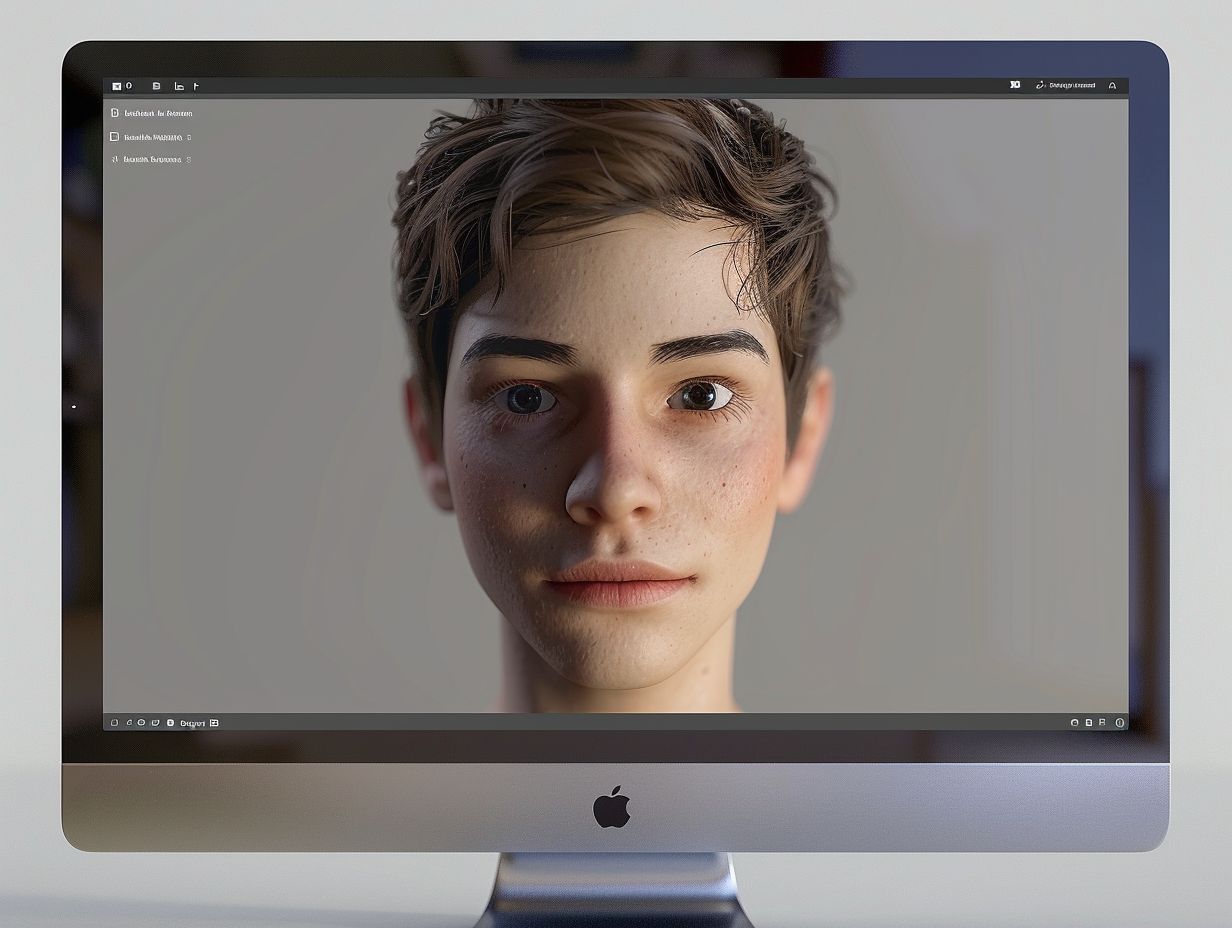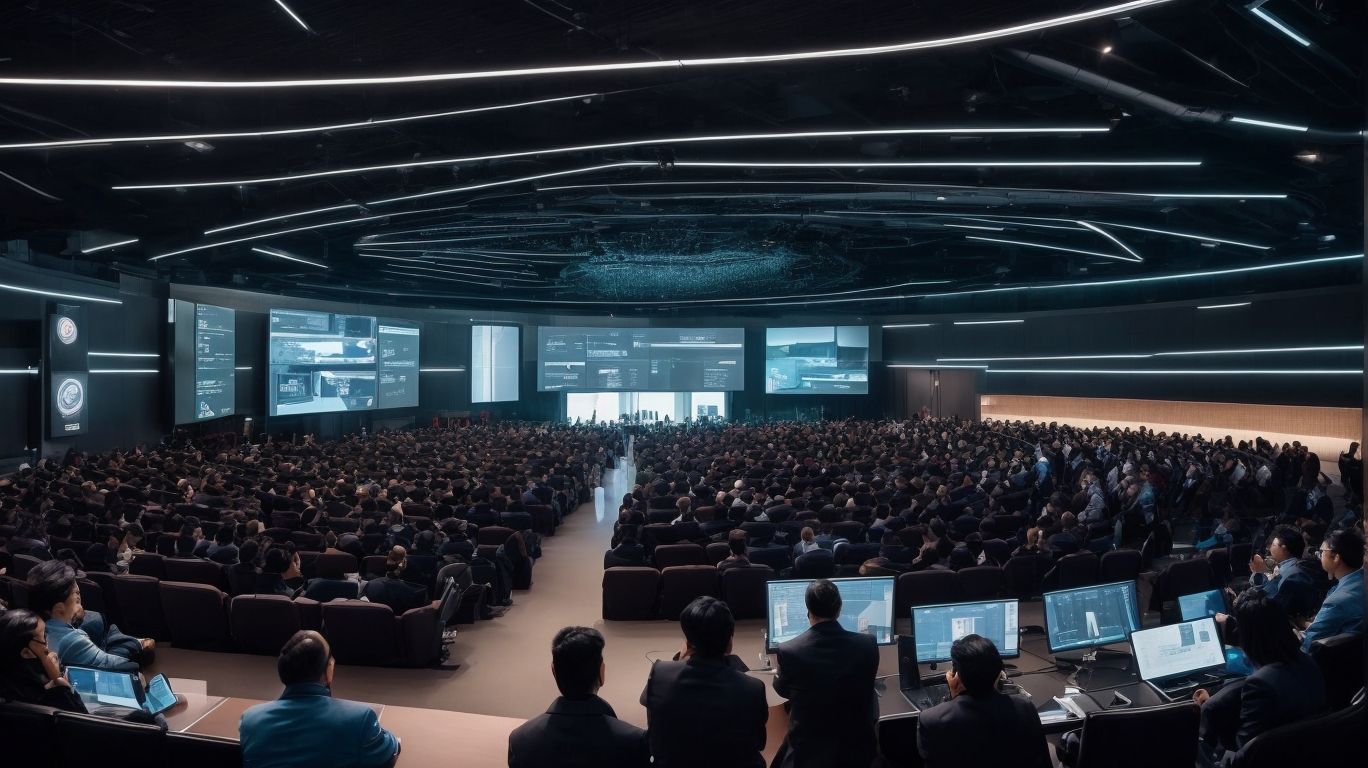Artificial intelligence (AI) trading bots are becoming increasingly popular among traders and investors. These bots use machine learning algorithms to analyze market data and execute trades automatically. They are designed to take advantage of market trends and make trades faster than human traders can.
Understanding AI trading bots is essential for traders and investors who want to stay ahead of the curve. These bots can provide a range of benefits, including increased efficiency, reduced risk, and improved profitability. However, they also come with challenges and risks that must be carefully considered.
Overall, AI trading bots are an exciting development in the world of finance. As technology continues to advance, it is likely that we will see even more sophisticated bots in the future. Traders and investors who are able to harness the power of these bots will be well-positioned to succeed in the fast-paced world of finance.
Key Takeaways
- AI trading bots use machine learning algorithms to analyze market data and execute trades automatically.
- These bots can provide benefits such as increased efficiency, reduced risk, and improved profitability, but also come with challenges and risks that must be carefully considered.
- As technology continues to advance, we are likely to see even more sophisticated AI trading bots in the future.
Understanding AI Trading Bots
Definition and Functionality
AI trading bots, also known as algorithmic trading bots or automated trading systems, are computer programs that use artificial intelligence and machine learning algorithms to analyze vast amounts of financial data and execute trades accordingly. These bots are designed to bring automation to trading activities, minimizing human involvement and emotional bias.
The primary function of AI trading bots is to identify profitable trading opportunities by analyzing market trends, historical data, and other relevant factors. Once a profitable trade is identified, the bot will execute the trade automatically, eliminating the need for human intervention.
History and Evolution
The use of AI in trading dates back to the 1980s when computer scientists began developing algorithms to analyze financial data. However, it wasn’t until the 2000s that AI trading bots became widely available to the public.
Since then, AI trading bots have evolved significantly, incorporating advanced machine learning algorithms, natural language processing, and other cutting-edge technologies to improve their accuracy and effectiveness.
Types of AI Trading Bots
There are several types of AI trading bots, each with its own unique features and functionality. Some of the most common types include:
- Trend-following bots: These bots analyze market trends and execute trades accordingly.
- Mean reversion bots: These bots identify overbought or oversold assets and execute trades based on the expectation that prices will revert to their mean.
- Arbitrage bots: These bots identify price discrepancies between different markets and execute trades to take advantage of them.
- High-frequency trading bots: These bots execute trades at high speeds, taking advantage of small price movements in the market.
Overall, AI trading bots have revolutionized the way traders approach financial markets, providing a powerful tool for improving profitability and reducing risk.
Benefits of AI Trading Bots
AI trading bots, also known as algorithmic trading bots or automated trading systems, are becoming increasingly popular in financial markets. These bots leverage artificial intelligence and machine learning algorithms to execute trades automatically. Here are some of the benefits of using AI trading bots:
Accuracy and Speed
One of the main advantages of AI trading bots is their ability to process large volumes of data accurately and quickly. They can analyze market trends, news, and other relevant information in real-time, making it easier for traders to make informed decisions. Additionally, AI bots can execute trades in milliseconds or microseconds, which can give traders an edge in volatile markets.
Emotionless Decision Making
Another benefit of AI trading bots is that they are emotionless decision-makers. Unlike human traders, bots do not make decisions based on emotions such as fear, greed, or anxiety. Instead, they rely on data and algorithms to make rational decisions. This can help reduce the risk of making irrational decisions that can lead to losses.
Backtesting and Simulation
AI trading bots also allow traders to backtest and simulate their trading strategies. This means that traders can test their strategies using historical data to see how they would have performed in the past. This can help traders identify potential flaws in their strategies and make adjustments accordingly. Additionally, bots can simulate trading strategies in real-time, allowing traders to see how their strategies would perform in current market conditions.
Overall, AI trading bots offer several benefits to traders, including accuracy and speed, emotionless decision-making, and the ability to backtest and simulate trading strategies. While they are not a guarantee of success, they can be a valuable tool for traders looking to optimize their trading strategies and improve their performance in financial markets.
Challenges and Risks
Market Unpredictability
One of the major challenges of AI trading bots is the unpredictability of the financial market. The market is dynamic and can change rapidly, making it difficult for AI algorithms to keep up. AI trading bots are designed to analyze market trends and make predictions based on historical data. However, the market can behave in unexpected ways, and historical data may not always be an accurate indicator of future trends. As a result, AI trading bots may make incorrect predictions, leading to losses.
Overfitting and Data Bias
Another challenge of AI trading bots is overfitting and data bias. Overfitting occurs when an AI algorithm is trained on a specific dataset and performs well on that dataset but poorly on new data. This can happen when the algorithm is too complex or when the dataset is too small. Data bias, on the other hand, occurs when the training data is not representative of the broader market. This can lead to incorrect predictions and losses.
To mitigate these risks, AI trading bots must be regularly updated and retrained on new data. Additionally, it is important to ensure that the training data is representative of the broader market and that the algorithms are not too complex.
Security Concerns
AI trading bots also pose security concerns. These bots are designed to make trades automatically based on predetermined criteria. However, if the bot is compromised, it can make unauthorized trades, leading to significant losses. Additionally, AI trading bots can be vulnerable to cyber attacks, such as denial-of-service attacks or hacking attempts.
To mitigate these risks, it is important to ensure that the AI trading bot is secure and that it is regularly updated with the latest security patches. Additionally, it is important to monitor the bot’s activity and to have contingency plans in place in case of a security breach.
Building an AI Trading Bot
Building an AI trading bot requires a combination of technical skills, knowledge of financial markets, and programming expertise. In this section, we’ll explore the key components required to build an AI trading bot.
Algorithm Design
To build an effective AI trading bot, one must first design a trading algorithm that takes into account factors such as risk management, market analysis techniques, and trading principles. The algorithm must be able to identify profitable trading opportunities, execute trades with precision and efficiency, and adapt to changing market conditions.
Data Sources and Quality
The quality of data used to train an AI trading bot is critical to its success. The data must be accurate, reliable, and up-to-date. Traders can obtain data from a variety of sources, including financial news outlets, social media, and market data providers. The data must be cleaned, preprocessed, and normalized before it can be used to train an AI model.
Machine Learning Models
Machine learning models are the heart of an AI trading bot. These models use statistical algorithms and mathematical models to analyze large amounts of data and identify patterns that can be used to make trading decisions. There are several types of machine learning models that can be used to build an AI trading bot, including supervised learning, unsupervised learning, and reinforcement learning.
Overall, building an AI trading bot requires a deep understanding of financial markets, programming expertise, and machine learning skills. By designing an effective trading algorithm, using high-quality data, and implementing machine learning models, traders can build AI trading bots that can potentially enhance their trading performance and capitalize on market opportunities in real-time.
Regulatory and Ethical Considerations
Compliance with Financial Regulations
AI trading bots are subject to various financial regulations, including anti-manipulation and anti-fraud rules. Compliance with these regulations is crucial to avoid legal consequences and reputational damage. AI trading bots must be designed and programmed in a way that ensures compliance with these regulations. This may involve integrating compliance checks and controls into the bot’s algorithms and workflows.
Furthermore, financial regulators are increasingly scrutinizing AI trading bots and their impact on the markets. As such, it is important to keep up-to-date with the latest regulatory developments and requirements. This may involve working closely with legal and compliance teams to ensure that the bot’s design and operation comply with applicable regulations.
Transparency and Accountability
Transparency and accountability are critical considerations when it comes to AI trading bots. These bots operate in a complex and dynamic market environment, and their actions can have significant impacts on market outcomes. As such, it is important to ensure that the bot’s design and operation are transparent and accountable.
One way to achieve this is through the use of explainable AI (XAI) techniques. XAI techniques enable the bot’s decision-making processes to be explained in a way that is understandable to humans. This can help to increase transparency and accountability, and reduce the risk of unintended consequences.
In addition, it is important to ensure that the bot’s operation is subject to appropriate oversight and accountability mechanisms. This may involve establishing clear lines of responsibility and accountability, and implementing appropriate reporting and monitoring processes. By doing so, the bot’s operation can be more transparent and accountable, and the risk of unethical behavior can be reduced.
Future Trends in AI Trading
As AI technology continues to advance, the financial industry is seeing transformative trends in trading, with significant implications for trading professions. Here are some of the future trends in AI trading:
Advancements in AI Technology
The advancements in AI technology are expected to improve the accuracy and speed of trading decisions. These advancements include the development of more sophisticated algorithms, the integration of machine learning, and the use of natural language processing to analyze news and social media sentiment. These technologies are expected to improve the ability of AI trading bots to make more accurate predictions and execute trades faster.
Integration with Blockchain
The integration of AI trading bots with blockchain technology is another trend that is expected to shape the future of trading. Blockchain technology provides a secure and transparent platform for trading, which can help to reduce fraud and increase efficiency. AI trading bots can use blockchain technology to execute trades automatically, without the need for human intervention.
Personalized Trading Experiences
AI trading bots are becoming more sophisticated, and are now able to provide personalized trading experiences for individual traders. These bots can analyze a trader’s trading history and preferences, and provide personalized trading recommendations based on the trader’s individual profile. This can help traders to make more informed trading decisions, and improve their overall trading performance.
In summary, AI trading bots are expected to continue to transform the financial industry, with advancements in technology, integration with blockchain, and personalized trading experiences being some of the key trends that will shape the future of trading.
Case Studies and Real-World Examples
AI trading bots are becoming increasingly popular in the financial industry, and there are many real-world examples of their successful implementation. Here are a few case studies that demonstrate the benefits of using AI trading bots:
Man Group’s AHL Dimension Program
Man Group’s AHL Dimension program is a leader in systematic strategies. The program uses AI algorithms to help trading bots follow and gracefully ride the ups and downs of the market. The bots use moving averages as a guide and can signal buys when short-term trends reach long-term levels and vice versa. The program has been successful in generating profits for Man Group.
Bitcoin Trading Bots
There are many Bitcoin trading bots available in the market that use AI and machine learning algorithms to make trading decisions. One such bot is Performer v2, which has been tested for a duration of 90 days. The bot has been successful in generating profits during this period.
StockHero and TrendSpider
StockHero and TrendSpider are two AI-powered trading bots that have gained popularity in recent years. StockHero uses machine learning algorithms to analyze market trends and make trading decisions. TrendSpider, on the other hand, uses AI to identify patterns in the market and make predictions about future trends. Both bots have been successful in generating profits for their users.
Overall, these case studies demonstrate the effectiveness of AI trading bots in generating profits for investors. However, it is important to note that AI trading bots are not a one-size-fits-all solution and require human oversight, intervention, and evaluation.
Choosing the Right AI Trading Bot
When it comes to choosing an AI trading bot, there are several factors to consider. The following subsections will help guide you in making an informed decision.
Evaluating Features and Performance
One of the most important factors to consider when choosing an AI trading bot is its features and performance. Look for a bot that offers a wide range of features, such as technical analysis tools, risk management options, and customizable trading strategies. Additionally, performance is key. Look for a bot that has a proven track record of success, with a high percentage of profitable trades.
Cost-Benefit Analysis
Another important factor to consider is the cost-benefit analysis of using an AI trading bot. While some bots may be expensive, they may offer a higher return on investment. On the other hand, some bots may be cheaper but may not offer as many features or have a lower success rate. It is important to weigh the costs and benefits of each bot before making a decision.
In conclusion, choosing the right AI trading bot requires careful consideration of its features, performance, and cost-benefit analysis. By taking the time to evaluate these factors, traders can make an informed decision and increase their chances of success in the market.
Conclusion
AI trading bots have the potential to revolutionize the way people trade. They can help traders make more informed decisions by analyzing vast amounts of data and identifying patterns that humans might miss. Additionally, they can execute trades automatically, saving traders time and reducing the risk of human error.
However, it is important to note that AI trading bots are not a magic solution. They still require human oversight and can make mistakes. It is also important to choose a reputable provider and thoroughly test any bot before using it with real money.
Overall, AI trading bots can be a valuable tool for traders, but they should be used in conjunction with other strategies and not relied on exclusively. As with any investment, it is important to do your research and make informed decisions.





